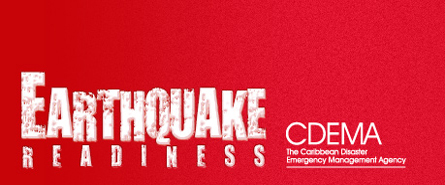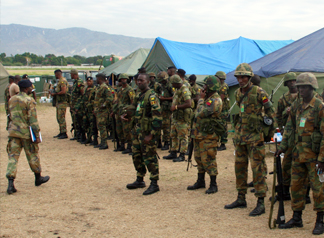
Warning: strtotime(): It is not safe to rely on the system's timezone settings. You are *required* to use the date.timezone setting or the date_default_timezone_set() function. In case you used any of those methods and you are still getting this warning, you most likely misspelled the timezone identifier. We selected the timezone 'UTC' for now, but please set date.timezone to select your timezone. in /home/wereadyo/public_html/earthquake/libraries/joomla/utilities/date.php on line 56
Warning: date(): It is not safe to rely on the system's timezone settings. You are *required* to use the date.timezone setting or the date_default_timezone_set() function. In case you used any of those methods and you are still getting this warning, you most likely misspelled the timezone identifier. We selected the timezone 'UTC' for now, but please set date.timezone to select your timezone. in /home/wereadyo/public_html/earthquake/libraries/joomla/utilities/date.php on line 198
| Mitigation of Hazards |
|
An earthquake may not actually occur during the childhood of students. However, the earthquake safety lessons they learn will stay with them and be useful in adulthood, both for themselves and to pass on to their children.
Earthquakes are a particular concern for schools with their large concentrations of children in confined spaces, and a relatively low ratio of adults to children. Schools need to ensure buildings are more earthquake-proof, include earthquake preparedness in emergency plans, teach children and staff what to do if an earthquake happens, and keep emergency supplies on hand.
The purpose of this guidebook is to assist school district staff, teachers, parents, and students to make their schools safer, and to know what to do before and after an earthquake occurs in their area. Mitigation of Earthquake Damage and Casualties The potential damage caused by earthquakes could be greatly reduced through a variety of earthquake mitigation measures. The most common (and effective) mitigation measures are the enforcement of seismic codes, land-use zoning, and engineering works to strengthen existing structures and stabilize hitherto unstable ground. Some measures are applicable to new development while others to existing development. Public education and awareness that influence human behaviour and settlement patterns are also important. However, a unified code for building earthquake-resistant restructures has not been adopted by Caribbean Community states. Settlement Patterns, Human Behaviour and Earthquake Vulnerability Notwithstanding the seismic characteristics of affected structures, human behaviour during an earthquake is a major factor in determining the extent of initial and directly-related casualties. As earthquake vulnerability is in part a function of the interaction between structural and human behaviour, it is reasonable to assume that earthquake vulnerability is generally greater in urban centres. "Unmanaged urban growth and human settlements are a problem since housing is often constructed without appropriate regard to building codes, zoning laws and environmental standards. This tends to result in highly vulnerable structures often built on marginal lands, hillsides or floodplains.” (Baastel, 2007). Search and Rescue (SAR) Response
The potential for additional follow-on casualties, once the shaking is over, is also dependent on human behaviour during the Search and Rescue response.
The two most important variables that determine the level of additional casualties during the response to an earthquake are:
• the speed or efficiency of finding and
The majority of trapped victims will be rescued by the initial efforts of unaffected people in the immediate area, assisted where possible by local first responders. The efficacy of this first reaction could depend on the level of earthquake awareness of the general population, plus the training and equipment-support for first responders (Baastel, 2007).
National Disaster Offices have concerns about the role of ordinary citizens in search and rescue efforts. Members of the public may either have a crucial role to play in these efforts (skilled in search and rescue, civil engineering, equipment supply) or may obstruct emergency personnel in the execution of their duty. It is important to gather from the NDO what its requirements may be in the event that buildings or infrastructure collapses from earthquakes. The Unique Characteristics Of Earthquakes Make It A Very Difficult Natural Disaster To Prepare For: Rapid on-set event - Earthquakes are rapid on-set events that occur with little, if any, warning. Ground Shaking - The magnitude of the earthquake at its point of origin determines the amount of energy released. Both the distance and the type of materials (rock type, ocean, etc) which earthquakes travel through affects the seismic waves and thus, the intensity of the same earthquake could differ at two different locations. The duration of the shaking is another contributing factor to the destructiveness of the event, as is the nature of the ground on which affected structures are located. Surface Faulting - Ground displacements in areas of active fault lines could result in damage to life-lines. Roads, pipelines, water mains and sewer systems could be severed if they stretch across fault lines, unless mitigation measures have been implemented. Induced Ground Failures - Ground shaking could trigger landslides or rock falls, which in turn could result in casualties or damage to structures. Seismic Hazards in Schools Seismic hazards can be considered in three categories:
The following are suggestions on how to eliminate seismic hazards: Classroom Hazards:
Neighbourhood Hazards
The purpose of identifying neighbourhood hazards is to assist in the planning of post-earthquake procedures such as the designating of assembly areas. It may be impossible to reduce such hazards, but to know what can happen is the basis of a good earthquake safety program. This list may be compiled with assistance from the local municipal police or fire authorities, utility companies, and federal or provincial emergency program personnel:
Mitigation of Maintenance Hazards
It is recommended that, prior to assessing hazards throughout the school, a plan(s) of the school and grounds are prepared. Such a plan(s) will:
|



Home | Glossary | Contact Us | Sitemap | Disclaimer











